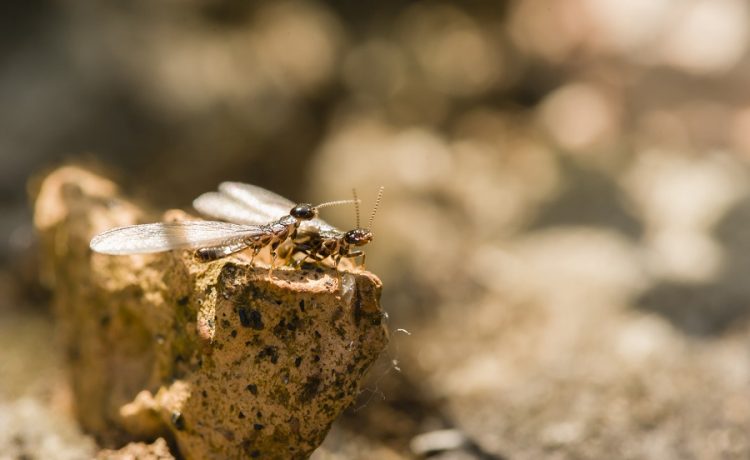Termites live mainly in dry wood and can be found in foundations, windows, and doorframes without being noticed. This can jeopardize the structure of the home, causing a lot of destruction, especially because most home insurance policies don’t cover termite damage. Here are indications that your home is infested with these unwanted guests:
- Swarmers
Flying termites called swarmers are usually the earliest sign of a termite infestation. These are young male and female winged termites that appear during the springtime to mate and look for a new, suitable location to start a colony. Young male and female termites lose their wings after mating. Wings that have been discarded by flying termites after mating are also another common sign that your home has been infested.
- Headbanging
Another sign of termites is clicking sounds that come from the walls. When a colony is disturbed, soldier termites shake their bodies or bang their heads against the wood to signal danger to other termites. Some termites that love eating wood are noisy eaters and if you listen closely to any wood infested termites you might hear them.
- Wood damage
Termites usually eat wood from the inside out. In the event that most wood has been eaten away, it will sound hollow or papery when tapped, signifying termite infestation.
- Mud tubes
Subterranean termites build mud tubes that provide moisture while they travel looking for food. This is because certain temperatures and humidity levels are required for their survival. These mud tubes usually pencil-sized can be found near possible food sources or where your house meets the ground.
- Drywood termite droppings
Drywood termites push their feces out of close to the entrances of their nests to keep their homes clean. Homeowners may find mounds of pellets that resemble coffee grounds or sawdust, indicating a termite infestation.
Unfortunately, termite infestations are not always visible and could go unnoticed for a while. This may cause significant damage to your home. One should therefore always be proactive in checking for these signs of infestation, and seeking professional help once termites have invaded your home.









